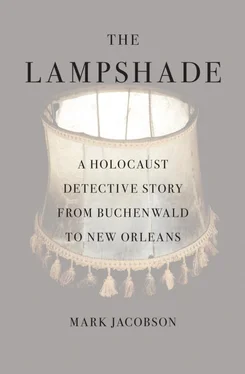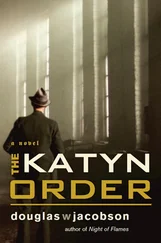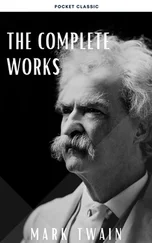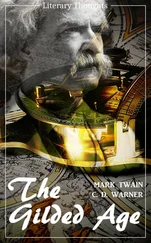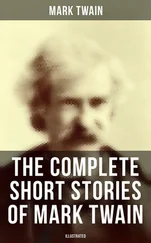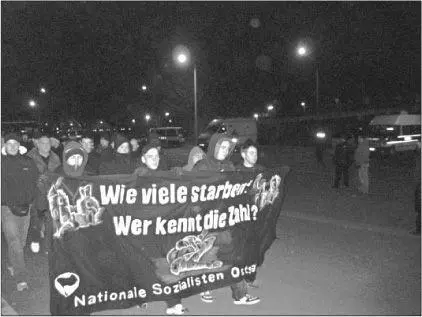
Right-wing march, Dresden, February 13, 2009
It was all so familiar, I thought, as the Kameradschaften walked by, heads bowed in the appearance of solemn prayer. Dead might be dead, but playing dead also looked the same the world over. The way these Nazis, in their black hoodies and skull masks, skeletons painted on their chests, came out of the torchlight murk, they would have fit right in on a hazy Mardi Gras morning at the corner of Clouet and Dauphine streets marching alongside the Bywater Bone Boys. That was the essence of Mardi Gras: behind the mask, when you’re just a bag of bones, you could be anyone.
But who exactly were these Kameradschaften passing in silence on the Ammonstrasse? There were statistics on neo-Nazi violence: how many Turks and Africans they had attacked over the years, in how many murders they had taken part. A day later a bus carrying trade unionists, in Dresden to protest the right-wing march, was stopped by nationalists; several of the union people were badly beaten. The left-wing blogs said, “Nazis attack bus.” Still, lots of people get called Nazis—terrorists, totalitarians, idiot gay-baiters, gangsters. When crystal meth freaks in Idaho are drawing Hitler mustaches on Barack Obama, who is to say who is a Nazi and who isn’t? But this obfuscation is unfortunate, because there are real Nazis out there, and it is good to know who they are, what they’re capable of.
Could they, for instance, make a lampshade from a human being?
Professor Knigge suggested that the lampshade was not finished asking questions, and here was one: given the chance, would these teenage torchlight marchers, in some distant racially pure future they claimed to long for, find it within themselves to capture large numbers of human beings whom they’d labeled the enemy, murder these people, strip the skin from their backs, tan that skin in the sun, order prisoners skilled in leatherwork to fashion the skin into a lampshade, attach the shade to a fixture wired for electricity, bring the finished project home to the house where their beloved children played, put the lamp on a bedside table, and pass a pleasant evening reading by the lamp’s light, and then flip off the switch to get a sound night’s sleep?
Did these Kameradschaften, these skeletal mourners, these antiglobalists in their Pali scarves, have the stomach for that?
How does one know when one is confronted by true evil? The Talmud says there are 7,405,926 demons, or mazikin, in the world. Seems as good a number as any; I’m not going to dispute it. I am also grateful that Hashem, in his infinite mercy, is said to block from us the sight of these ubiquitous demons, for as Abba Benjamin, sage of the Babylonian captivity, says, if their multitudes could be seen, no creature could endure knowledge of their presence. Seeing too many demons could drive you crazy, and if Jerusalem has its own syndrome, for someone like me, Germany does, too. It is an ingress of paranoia, a shadow that follows each smiling beer maid and train conductor, a miserable, unshakable slime trail of the past. And standing on that Dresden street watching Kameradschaften “dead” walk by, I could feel myself becoming “unstuck in time” just as Billy Pilgrim had before me. Likely this sensation was cued by one of the banners being held by the marchers, which translated from the German read “worse than Hiroshima.” It was, as I recognized, a paraphrase of a line in Slaughterhouse-Five, where the narrator, named “Kurt Vonnegut,” says that “not many Americans knew how much worse it had been than Hiroshima.”
Worse than Hiroshima … The word itself is enough to cue the newsreel inside the brain, the series of slow dissolves set to musical portent: Einstein, Oppenheimer, Fermi. Paul Tibbets and the B-29 named after his mother, Enola Gay, the kiss she gives will never fade away. And then the wide-open sky, the blinding light brighter than a thousand suns, a pan across the shattered landscape, the woman crawling through the wreckage, her arm upraised to the sky, beseeching heaven, as if that would help.
“Worse than Hiroshima.” What could be worse than Hiroshima? Who was qualified to make such a declaration? Not “Kurt Vonnegut,” not these masked neo-Nazis, not me. The world was full of victims and perpetrators. Every so often the victims and perpetrators would change places, as if in some vicious, unending square dance. So it goes, as Vonnegut would say. The duality was present in the lampshade. On one hand there was Ziggy, the victim, the poor schmuck who got turned into a lampshade, and there were the awful people who’d done it to him. Sometimes it was one thing, sometimes the other. Only the Nazi stayed the same. Him and Hashem, immortal, immutable opposites, who deserved each other.
The rumor on the Ammonstrasse was that the antifa had arrived to take on the Kameradschaften, but the Dresden cops, in full riot gear, had the leftists bottled up inside the train station. In Dresden the cops were like that, people said, bent on attacking the leftists, protecting the Nazis. That was too bad, I thought, because I wouldn’t have minded some action, a little duke-out between the true believers. As it was, I almost got to throw a punch myself, and take one, too, no doubt. What set me off was another of those Nazi banners being held by four or five skeletons. It read “10.5 Million Germans Ask Why?”. The statistic was the reputed number of German citizens, soldiers included, who met their death during World War II.
Reading that, I might as well have been back in the old Queens schoolyard, with the sons of sanitation workers shaking their fists, claiming that if I didn’t shut up they were going to turn me “into a lampshade.” In this case it wasn’t the threat that ticked me off. It was the plaintiveness, the earnest, weak whine of the appeal, exactly the sort of sheep-to-the-slaughter attitude the Übermenschen Germans attributed to the lowly Jews, that alleged pathetic helplessness that only triggered more Blutrausch, the frenzy of killing that once begun could not be stopped.
“10.5 Million Germans Ask Why?”
“Why? You want to know why ? I’ll fucking tell you why! ” The voice was mine but it might as well have come from the lampshade itself.
A few months later, into the fall, I again found myself riding the number 6 bus up the Blood Road, to Buchenwald. On my lap, having once more flown across the ocean in an overhead rack, was the lampshade. If you want, you could call it a homecoming of sorts.
Volkhard Knigge was waiting in front of the old SS barracks. In his customary all black, he looked like a taller Johnny Cash as he stood under a large umbrella in the sharply falling freezing rain. Since our last meeting, Knigge had become what he called “a little famous,” owing to the worldwide coverage of President Barack Obama’s visit to Buchenwald in July 2009. Knigge could be seen on websites everywhere chatting with Obama, as well as German chancellor Angela Merkel, Elie Wiesel, and Wiesel’s fellow survivor Bertrand Herz, as they walked across the Appellplatz .
Obama’s Buchenwald stopover was foreshadowed by a misstatement he had made during his generally impeccably modulated presidential campaign. During a speech to a veterans’ group, Obama said his great-uncle Charles Payne, a member of the Eighty-ninth Infantry Division of George Patton’s army, had assisted in the liberation of Auschwitz. This was incorrect. Actually, Payne had taken part in the liberation of the Buchenwald satellite camp at Ohrdruf, where General Eisenhower first saw sights that “beggar description.” Obama’s error recalled the flap over the 1992 documentary Liberators, which portrayed the segregated, African-American 761st Tank Battalion as the first U.S. Army unit to reach Buchenwald in April 1945.
Читать дальше
